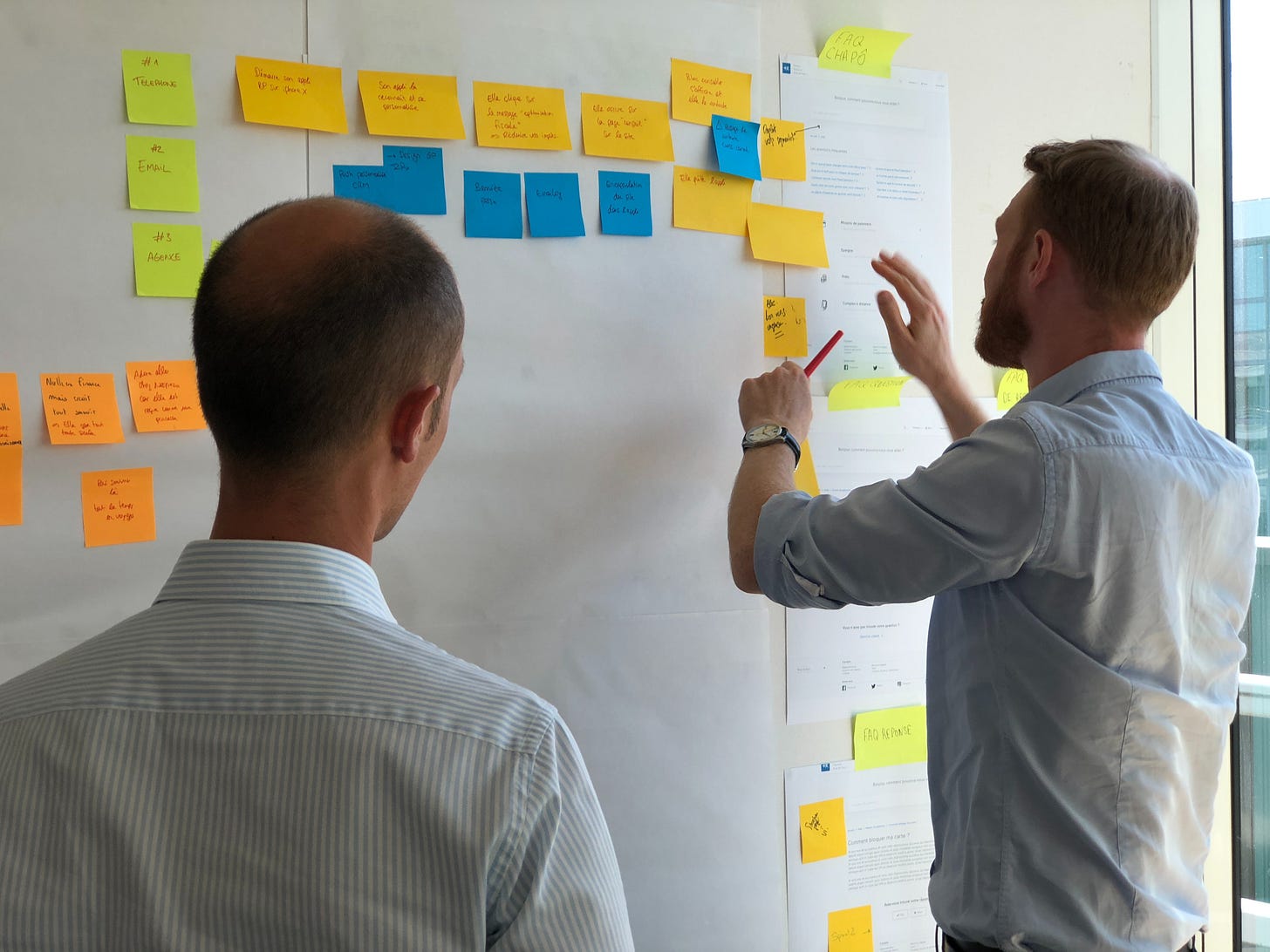
I'll be transparent by stating that this week's topic is heavily influenced by my recent two weeks of work. I've had the privilege of conducting five different workshops in the past couple of weeks, and I've also been in the process of designing a few new workshops for upcoming use. As a result, workshopping is at the forefront of my mind currently.
Workshopping constitutes a fundamental activity within my design strategy practice. Some readers might find this controversial, as many perceive design workshops as mere theater involving meaningless activities that decorate walls with sticky notes and generate illusions of meaningful productivity. This depiction is often accurate; teams tend to overuse workshops, employing them to address minor issues that could be resolved just as effectively through a quick sync or a message on Slack.
With this context in mind, I'd like to highlight a few scenarios where workshops prove to be the optimal tool:
Project Kickoff: I believe a project kickoff workshop is almost essential. These kickoffs often serve as a fertile ground for project participants to freely communicate their goals, aspirations, and visions for the project. In this context, workshopping provides the ideal platform to establish the alignment and structure that is crucial for the project's infancy.
Idea Generation ("Brainstorming"): The term "brainstorming" can be intimidating when spoken aloud or worse, mentioned in an email. However, opportunities arise during projects to bring individuals together for idea generation and problem-solving. It's crucial to ensure that these activities occur within a structured environment. Too often, valuable ideas are lost, and hours are wasted in unstructured “brainstorming” sessions.
Team Building: Not all workshops need to be grand strategy sessions with world-altering potential. It's perfectly acceptable to arrange enjoyable activities for colleagues, especially at the start or end of the workweek. Team-building workshops are particularly valuable in remote work settings, where face-to-face real human interaction is limited.
While there are many scenarios where workshops aren't the optimal choice, I adhere to the belief that "most meetings should be workshops." This is because most meetings can be handled asynchronously (e.g., through emails). Therefore, meetings that genuinely need a meeting are likely best suited for workshops. Nevertheless, it's important to recognize that workshops aren't always necessary. Here are some instances where using a workshop should be avoided:
Routine Tasks & Tactics: No you don’t need a workshop to discuss the size of a logo or select a headline for an upcoming marketing email. Workshops should guide strategy and problem-solving, not delve into specifics of tactical execution.
Unclear Objectives: This is a major pitfall leading to workshops becoming design theater. Before conducting a workshop, I always ask what objectives we have for the workshop and what problems we are trying to solve. If these objectives aren't clear, I avoid organizing the workshop.
Ego Gratification: Unfortunately, key stakeholders will request workshops to showcase their ideas or personal accomplishments. Worse, some facilitators themselves have exhibited egotism during workshops. Workshops are not platforms for ego-driven displays. It's acceptable to have preliminary ideas prior to a session, but workshops should encourage exploration, feedback, and challenge. Participants, especially facilitators, should approach workshops with open minds and minimal preconceptions.
While there are various ways a workshop can become unproductive, even well-intentioned workshops can lose their effectiveness. Running a workshop can be an excellent idea if approached correctly. However, it's essential to ensure you're doing so for the right reasons, with the goal of generating valuable outcomes for the people you are working with and trying to help.
My favorite things of the week
If you’re interested in design strategy start here:
Here’s a great new resource for designers working in healthcare.
Here’s an interesting article by Enrico Bertini that asks if visualization can elicit empathy.
Here’s a nice story about using journey maps to improve the patient experience for rural Alaskan populations.
Finally, something to think about heading into the weekend




